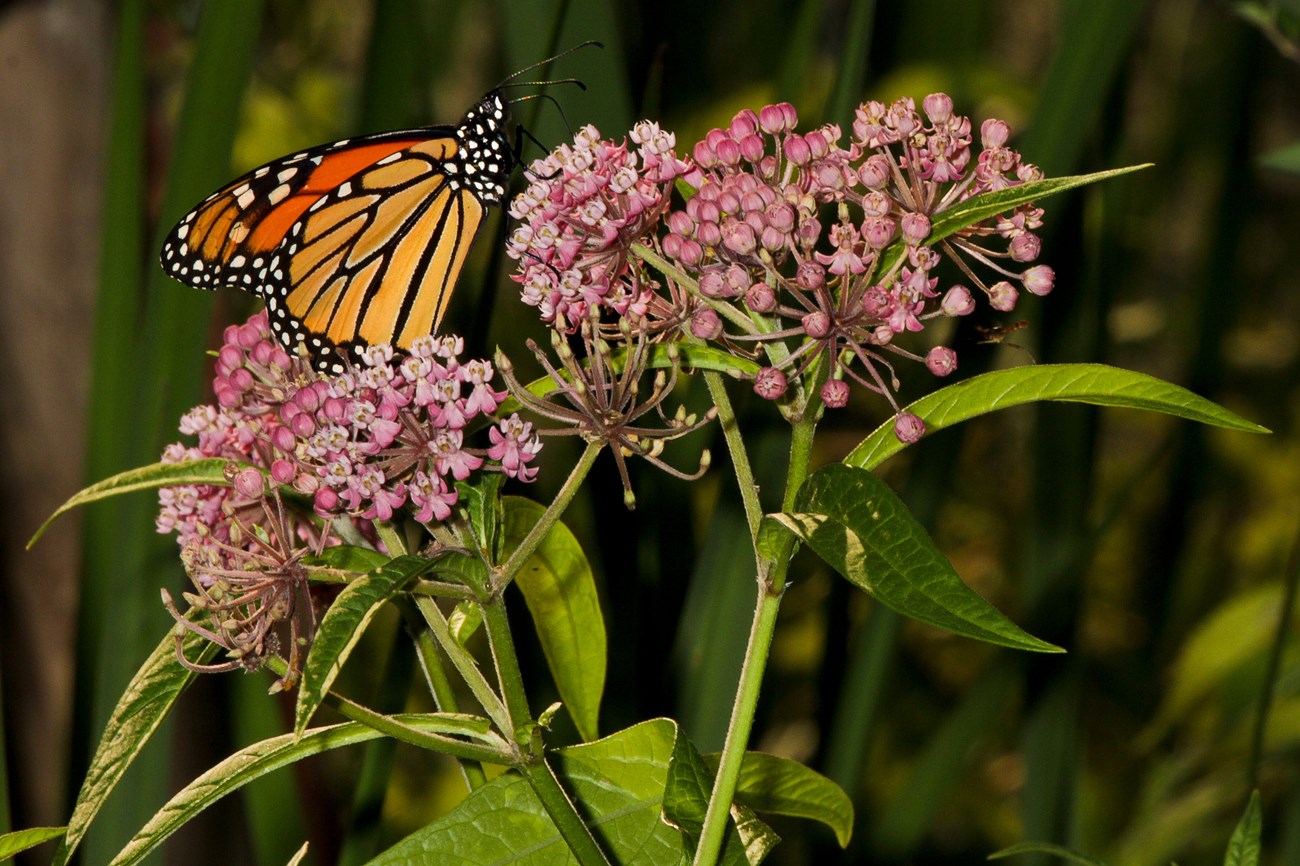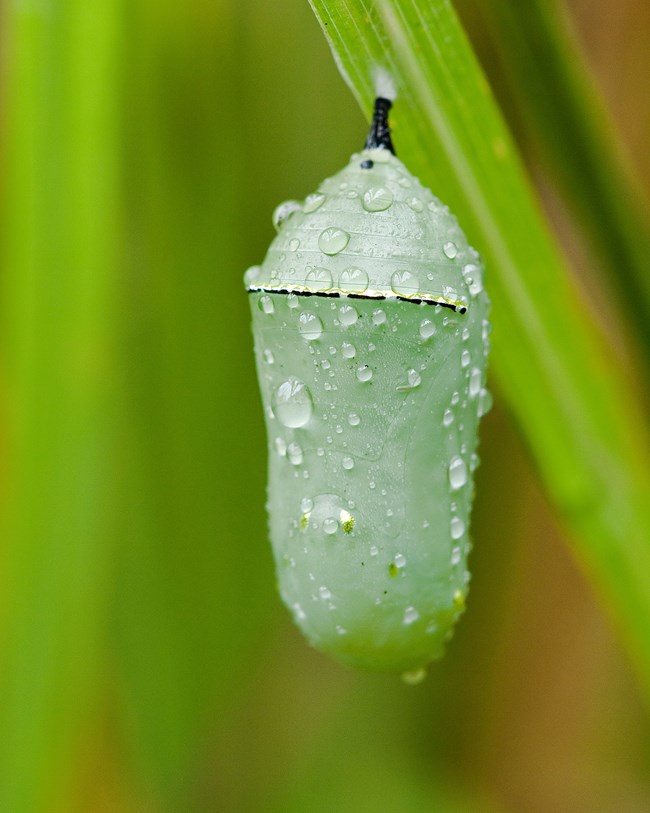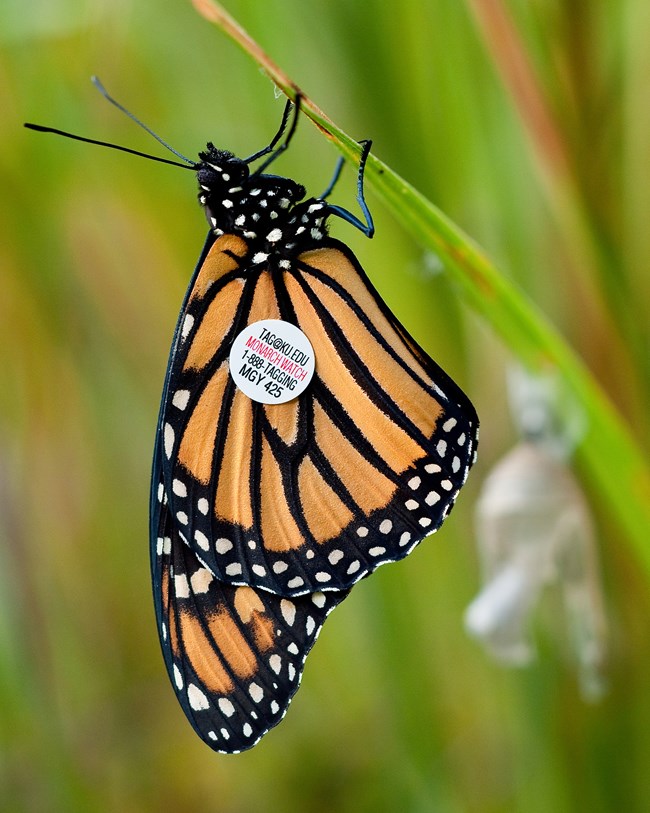Last updated: November 23, 2021
Article
Monarchs on the Move in Cuyahoga Valley

© Jim Kaftan
Imagine going on a journey of over 2,000 miles to find a small place, only a few thousand acres, that is essential to your survival. You have no guidebook and only one opportunity to succeed. This unprecedented feat is accomplished by a creature that many consider delicate: the monarch butterfly. Even more amazing is that it takes these butterflies up to four generations to complete their annual migration. Cuyahoga Valley National Park is part of a patchwork of vital habitats across North America supporting these intrepid travelers. In summer, look for breeding monarchs laying eggs on milkweed plants. In fall, observe migrating monarchs fueling up on nectar as they trek to the oyamel fir forests in the mountains of central Mexico.
Long-Distance Travelers
It takes monarchs three or four generations to migrate from their overwintering grounds in central Mexico to their breeding habitat in the northern United States and Canada during the spring and summer. The last generation makes the entire return journey south to Mexico during the fall.
As the air warms in early March, monarchs become more active and leave the protection of the oyamel fir forests to head north, mate, and seek the nearest milkweed fields to lay their eggs. These offspring are Generation 1. Monarchs follow specific routes, called flyways - one of which stretches to the Great Lakes. Generations 1 and 2 journey progressively north: mating, laying eggs, and dying along the way. The summer monarchs that we see at Cuyahoga Valley are Generation 3. Some stay to breed and others venture across Lake Erie into Canada. In the fall, we see Generation 4, which delays reproduction in order to save energy. This allows Generation 4 to live up to eight months. After building up fat reserves, these butterflies migrate a remarkable 2,000 to 3,000 miles back to central Mexico to overwinter, before beginning the cycle again.

© Jerry Jelinek
Observing Life Stages
Summer breeding monarchs are attracted to the Cuyahoga Valley because of abundant milkweed, the only host plant that their young can eat. When females start arriving in late June, they typically lay one cream-colored egg per plant, no larger than a pinhead, on the underside of milkweed leaves. With a magnifier, you can see that the eggs have an elliptical shape with parallel ridges.
After three to six days, a tiny caterpillar, or larvae, emerges and starts eating the milkweed, internalizing toxic chemicals from the plant. To warn predators, the young monarch soon turns a distinctive pattern of bright yellow, white, and black. Feeding day and night, the caterpillar grows so rapidly that it must shed its skin, or molt, every three days.
The stages between larval molts are called instars. A monarch goes through five larval instars. With each shed, it adds more color bands along its body, becoming nearly two inches long in two weeks. At this point, the caterpillar is striking and conspicuous.
After the final molt, the caterpillar stops feeding and starts searching for a sturdy place on its host or a nearby plant. There, it weaves a silk button where it attaches itself and hangs upside down like the letter J. After about a day, it sheds its skin for the last time and forms the pupa, a magnificent greenish chrysalis with gold spots. After nearly two weeks, the chrysalis becomes transparent; inside you can see the butterfly that will emerge in a day or two.
Adults That Captivate
Monarchs, with their bold orange and black pattern, are the mostly widely recognized butterfly in North America. Birds that have eaten a monarch soon learn to recognize this distinctive coloration, too; the nasty-tasting toxins from the insect's initial diet of milkweed cause the bird to have a minor heart attack.
Another common butterfly, the viceroy, takes advantage of predators' aversion to monarchs by mimicking their appearance. How can you tell the difference? First, a monarch butterfly has a wingspan that is up to four inches, about an inch larger than a viceroy. Second, look at the white spots on the top of their forewings. In monarchs the spots are larger and more abundant. The third clue is that viceroys have a black band along the hind wings that is absent in monarchs.
At Cuyahoga Valley, mid-September is the best time to see Generation 4 adult monarchs during peak migration. Migrating monarchs must replenish their energy reserves every day at stop-over areas along their route south. They seek old fields in the afternoon where they can feed on nectar-rich flowers, such as goldenrod and New England aster, before retreating to nearby forests in the early evening. Terra Vista Natural Study Area and the large meadows along the Cross Country Trail near Pine Hollow are both excellent monarch habitats.

© Jerry Jelinek
Providing Stewardship
To ensure a bright future for this amazing animal, people across North America are working together to protect monarchs and the plant communities that support them during their four-generation journey. Cuyahoga Valley is part of the Monarch Butterfly Sister Protected Area Network, an international effort by Canada, the United States, and Mexico to conserve monarchs. For several years, Cuyahoga Valley has done joint projects with Point Pelee National Park, a narrow strip of land in Ontario where migratory animals congregate before crossing Lake Erie into Ohio.
How can you become involved in monarch protection here in Northeast Ohio?
- First, observe butterflies without disturbing their normal behavior. We recommend using binoculars. Please note that netting butterflies is not permitted in the national park.
- Second, create a butterfly garden at home. Use nectar-rich native plants, such as goldenrods, to attract migrating monarchs and milkweed to attract breeding ones. Avoid using pesticides and herbicides in your yard.
- Third, become a citizen scientist! Volunteers skilled in butterfly identification conduct weekly counts from late spring through fall at several areas throughout the park. Volunteers also monitor milkweed plants for monarch eggs and caterpillars during the summer. For more information, contact the volunteer center at 330-657-2296 or volunteer@forcvnp.org.

NPS / Ted Toth
Tags
- cuyahoga valley national park
- ohio
- midwest
- biodiversity
- animals
- wildlife
- conservation
- wildlife corridors
- resource management
- natural resource management
- natural resources
- research
- science
- park science
- field study
- ecosystem monitoring
- insects
- pollinator
- butterflies
- monarch butterflies
- monarch migration
- monarch watch
- native plants
- volunteers
- citizen science
- community science
- milkweed
